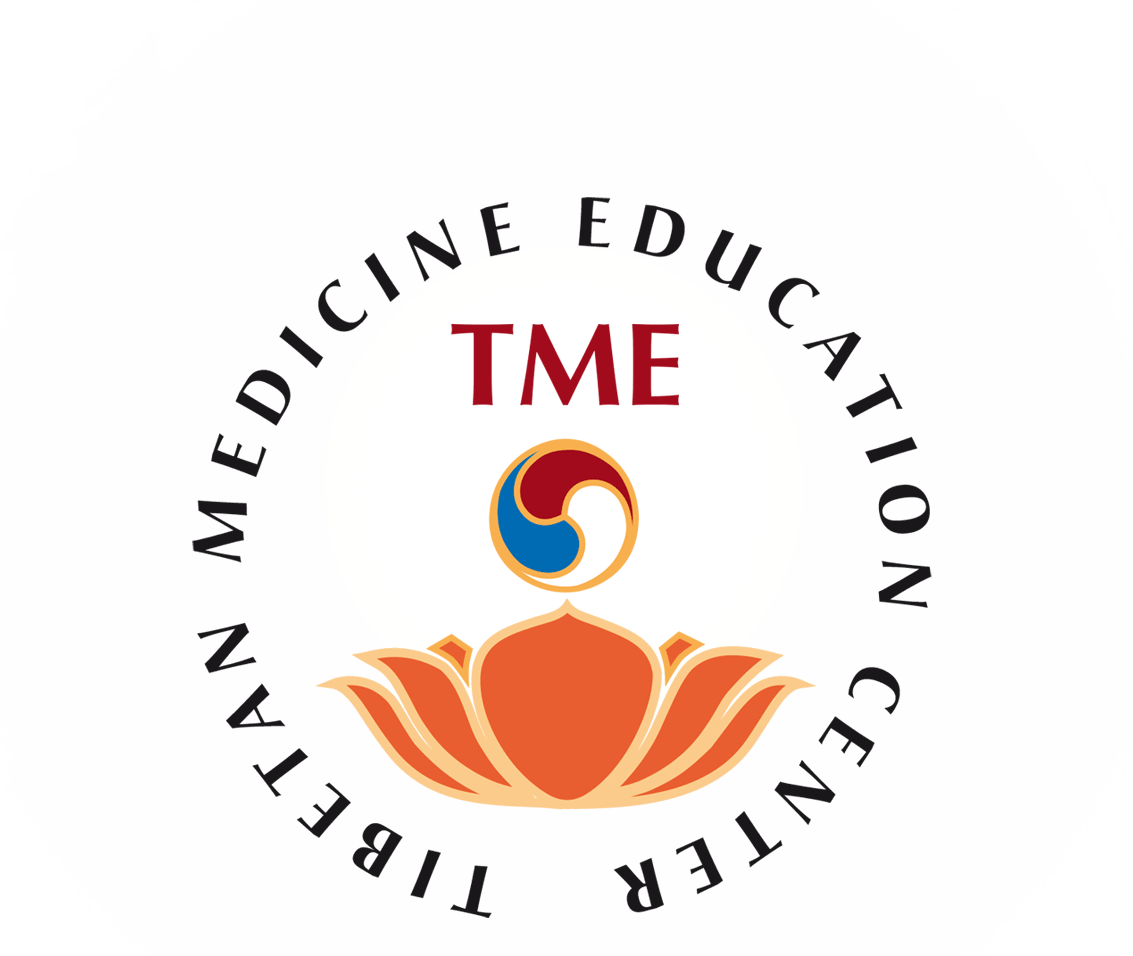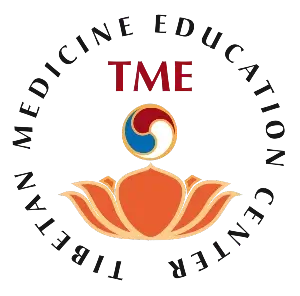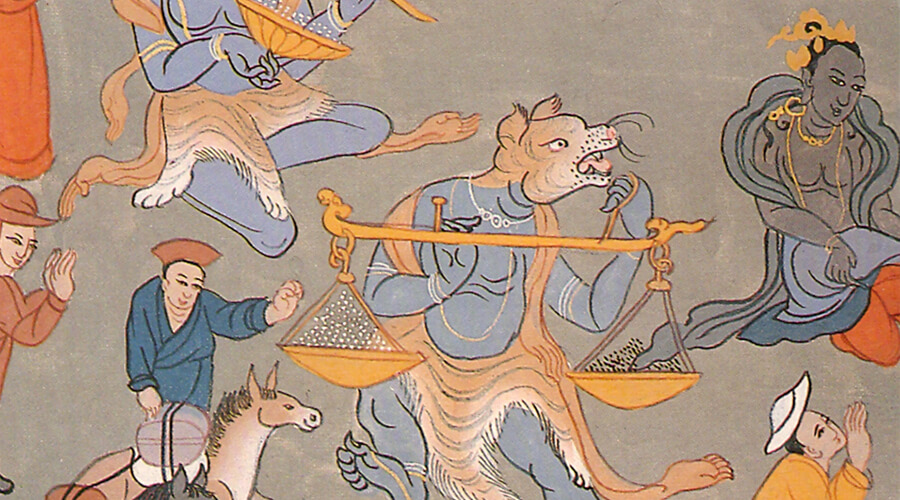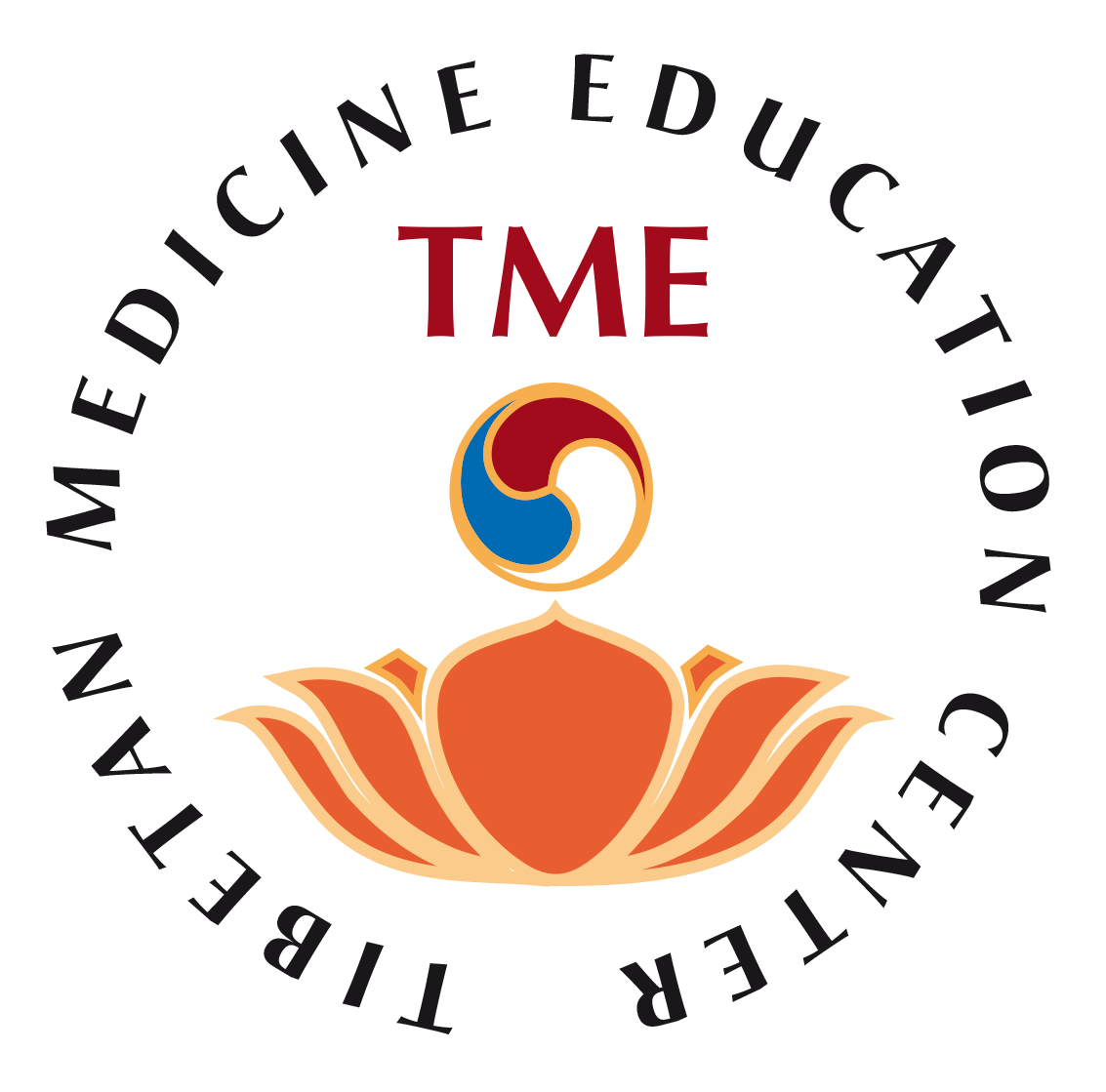Dream and Bardo
Dream Yoga – Part 2

Dear Dr. Pasang Yonten Arya La, thank you very much for giving part of your time and allowing me to do the second part of this interview.
Briefly, in the case of a disease being manifested during the night and thus obstructing our practice, what type of dreams or experiences a practitioner may have?
Disease dream or obstacles may appear at any time, but the Gyud-shi (rgyud bzhi), the Four medical Tantras specifically mentions two times: after mid night and in early morning.
But let’s first define what the disease is: firstly, according to Buddhism, from the beginning of our previous lives, ignorance manifests five mental afflictions or three mental poisons that constantly influence our mind, producing the feeling of “I”, self-centered mind and desires. This conditions our mind and produces our own interpretation of the world, which by itself is an illusion, and the source of joy and sufferings, whether in dreams or in the daily life. This primary disease that deludes our mind is in anyway with us from the beginning, and thus also from the beginning of this present life.
Secondly, karma, and bad physical condition may affect the mind. Some of these diseases may already manifest during the pregnancy, disturbing the fetus development and leading to illness or insanity during the life. Though many of these diseases attack later in life. They are said to be of three types: disease manifesting from karma, disease manifesting from the physical body humors and disease manifesting from the mixed two first types. These diseases are conditioned by wrong diet, wrong behavior, unfavorable season and climate, and by mental and emotional disturbances including evil spirits influences. Therefore anywhere and at any time, disease may attack. However, good spiritual practitioners might see some clues of external or internal influences through feeling, vision or dreams.
Whether during sickness or in healthy life, thoughts, emotions and dreams are stimulated and driven by the subtle and gross Wind energy flows (rlung) in the channels. When these channels, whether gross or subtle, have not developed properly, are not flexible or are blocked by obstacles, Wind cannot flow properly or functions in the wrong channels, and manifests diseases. For example, body fire may produce an excess of negative wind energy (fire-wind: carbon dioxide) circulating in the body and flowing up to the brain. That phenomenon can become the cause of hallucination and produce anger. The person will begin to see and hear unusual phenomena, experience nightmares and unhappiness, leading to aggressiveness or mood changes during the dream itself, and also during the day. Tibetan medicine says that all body/mind diseases manifest due to the blockages of the channels.
Many of these blockages are invisible and subtle therefore they are called ‘evil spirit’ obstacles that destabilize the practice itself and the personality. I am not saying there are no evil spirits outside, there are but Mahayogi Milarepa said:
“Whatever appears in the outside,
Is just an hallucination, if [one is] not realized”
Through another language, the Tantric spiritual practice states that all phenomena are caused by the Wind element suffering in the channels so that it may produce various dreams, sufferings, diseases and obstacles any time and at any place.
Sometimes the body physiology produces many dreams but doesn’t show anything particular. It is just a reaction of body/mind change in certain positions and functions.
A physical disharmony will also influence the dream practice. It is well described in the dream prognosis chapter of the Gyud-shi that uses dreams as a diagnostic tool for the humors diseases. For example dreaming of fire may mean fever, while dreaming of lake and water may show Phlegm and cold disorders, and a windy phenomenon be the sign of Wind disorders. Narrow streets are the signs of channels disorder, insects of infections, and naked body of a lost Lha. These body phenomena, experienced by the consciousness, and reflected in the dream under symbolic appearances alter or transform the practice. Beside the basic mental, physical and humors influences, much more is described concerning complex mental, spiritual and prognostications dreams.
Does our daily life diet influence our practice?
Yes, indeed. The daily food influences much the body, which, in turn, produces the gross mind (rnam shes rags pa), therefore the diet, and the behavior and seasonal factors also influence and change our mind. The nutrition essence and wind energy transform the life sustaining wind energy (srong ;dzin gyi rlung’) that goes to the brain, is burnt there to produce the energy that holds the life and maintain the body/mind “stability”, if we may call it that way. For practitioners, but also for any ordinary person, it is generally said that vegetables, fruits and cereal-based diet is considered healthier for the mind than meat and other heavy food. Therefore to keep a clear mind in meditation it is ideal to be vegetarian. Yet in the Tibetan medical point of view, if there is unstable mind and emotion imbalance created by a Wind disorder, the person may need to eat red meat and other animal products in order to keep balance and stabilize the mind.
Which type of beings specifically may manifest during the dream practice at night, and during which part of the night?
Evil spirits provocations generally disturb the dreams of the middle part of the night, while in the early morning most of the prediction dreams appear like health, wealth and spiritual signs, and when practitioners may also see visions of their masters and Yidams (tutelary deity).
In your very interesting seminar about Dream Yoga, I heard that some kind of incenses may protect us, is that correct?
Generally Wind calming incenses such as the healing incense based on Agar31 (rlung dugs spos) are helpful to calm down all types of wind disorders. Especially in the case of the Wind constitution type of people, these incenses are helpful to calm down the agitation that arises from the daily life as well as high emotions. Tibetans believe that some ingredients of the healing incense may protect from negative energy.
I have understood that two different classifications exist to divide the night in portions, each one representing different aspects of our practice. Is it possible for you to delineate them briefly?
The duration of sleeping, whether short or long can be divided into six parts, but the explanation is based on a normal sleeping period such as 6-8 hours.
The Gyud-shi describes six types of dreams that can be analyzed according to the time of dreaming:
- Dreams of what was seen the day before.
- Dreams of what was heard the day before.
- Dreams of experiences of the day before.
- Dreams of prayers; fulfillment of spiritual wishes.
- Dreams of fulfilling wishes.
- Dreams of bad omens or illness prognosis.
Also the night can be divided into three sections of dreams:
The first part of the dream is influenced by daily life experiences, dinners, Phlegm humor and Phlegm disorders. The second part of the dream is influenced by other types of sentient beings of different natures, evil spirits and demonic influence, past life experiences, Bile humor, and Bile disorders. The last part of the dream or the morning dream is influenced by future prediction, spiritual messages, Wind humor and Wind disorders.
At which time of the night is a dream better remembered ?
As said before, there are six different time portions in one night, each of them reflecting different aspects, but the last one in the late night or early morning is the most significant to the memory, health, and prediction. The best method to remember dreams is to write down the experience right after the dream.
Let’s give some terms used in the dream in literature and in colloquial language of the dreams. Dream is called ‘gnyid’ (or ’gnyid pa’) in Tibetan, which means losing consciousness. The gross consciousness temporarily dissolves and enters into state so it is also called ‘gnyid lam’ the path of sleeping. It is also called ‘rmi ba’ that means seeing the dreams or seeing in the dream the reflection of one’s self by our mind.
And having to follow the dream path without any choice in the dream is called ‘rmi lam’ the path of the dream. The dreamer is in fact like a “child in an unknown street”.
Dream is a physiological language, the body energy influences the mind and in ordinary people this interaction drives the mental consciousness without choice inside the ‘dream world’. For the practitioners, dream yoga is a practice to train the mind to keep control rather than be contrived by physiological driving. In the Tibetan spiritual context, the purpose of this practice is the training for the Bardo transformation.
Thank you very much Dr. Pasang Yonten Arya La







